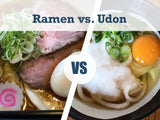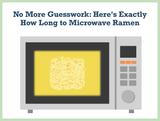
Is ramen considered pasta?
No, it is not
Here are some reasons why...
Reason 1: Pasta is an Italian cuisine, while ramen is Japanese food

Imagine this scenario, where you are at a ramen restaurant and placing an order with a waiter.


Customer: Can I have ramen noodles?
 Waiter: Sure.
Waiter: Sure.
---5 minutes later---

Waiter: Here it is.

It is quite confusing. Right?
Pasta is a noodle dish which is specifically from Italy.
But wait, there are more reasons...
Reason 2: Sauce is used for pasta, while soup is used for ramen

Ramen is served in soup which consists of two components: meat, fish, or vegetable-based broth and tare which is a sauce, usually made of shoyu, miso or shio.

Yes, you read that right.
Almost all regions in Japan have their own variation of soup.
Pasta is always served with sauce.

Tomato base, cream base, and oil base sauces are very common.
Reason 3: Ingredients

Ramen noodles are made of kansui (an alkaline solution) and milled flour.
Pasta is made of unleavened durum wheat flour, water, and eggs.
Reason 4: You use durum wheat when you make pasta

Pasta and ramen are both made of flour, but pasta is specifically made of durum wheat.
What is durum wheat?
Durum wheat can be found in the Mediterranean region. This wheat makes noodles harder and more coarse. Durum in Latin means "hard".
Ramen noodles are definitely not pasta because they are not made of durum wheat.
They have a softer texture and a smoother feel.
Reason 5: You need to use kansui to make ramen noodles
When you make ramen, you use “alkali water” (kansui), but you don't use it for Italian pasta.
Want to know a secret?
Kansui makes noodles...
1. Yellow,
2. Chewy, and
3. Gives it its distinct ramen noodle flavor.
So how did people know to add kansui to wheat flour and water to make ramen?
Long ago in Inner Mongolia, some people made noodles out of flour and water from a salty lake.

The salt water had sodium chloride, and the completed noodles were chewy and had a nice flavour.
The lake is called Kanko (鹹湖) and the water is called kansui (鹹水).
Reason 6: Pasta comes in various shapes

Pasta is shaped in traditional Italian ways.
Like spaghetti, penne, lasagne, ravioli, etc..
That's right.
Pasta comes in over 350 shapes. And usually, the type of sauce determines what shape of pasta is used.
There are long and short shapes, tubes, flat shapes, sheets, etc..
The names of specific pasta vary by location and each one has a specific purpose.
Shapes of ramen noodles are basically all long strips.
But, you think ramen noodles are that simple?
Wrong!
There are many variations of ramen noodles.
For example, the thickness of the noodles, straight noodles and wavy noodles, and square cross-sections and rectangular cross-sections.



Reason 7: Al dente
Cooking the core of pasta hard is called al dente.
And you know what?
You can only cook your pasta al dente using dried pasta.
For ramen noodles, it is not common to cook noodles al dente, even if they are dried instant noodles.
But did you know there are few exceptions?
Only few kinds of ramen have the concept of "al dente".
For example: Hakata and Nagahama ramen.

You will see that noodles at Hakata and Nagahama ramen restaurants are very thin and you can choose the hardness of the noodles from 6 varying levels.
From soft to hard:
Bariyawa, yawa, kata, barikata, harigane, konaotoshi
(kata to konaotoshi are considered al dente)
Reason 8: Oil
Fact: Some instant ramen is fried in oil but pasta is not.
On the other hand, traditional raw ramen noodles are not fried.
Reason 9:Toppings
Popular ramen toppings are chashu, menma, ajitama, green onion, and nori.

Popular pasta toppings are mushroom, tomato, onion, and cheese.
Yum!
Reason 10: Origin
You may wonder where noodles are invented.
Noodles are invented by the Chinese. The oldest noodles that been found was 4000 years old. It was made of chestnuts instead of wheat flour.

Here’s the deal:
Origin of ramen noodles is in Inner Mongolia in 4th century which is 1700 years ago.
People found mixing flour and kansui makes noodles' taste better.
Pasta also has a long history, but it was eaten differently before.
For a long time, it was baked and not boiled in water.
The oldest record of the way we eat pasta nowadays (boiled in water) was dated back in 1224.
Reason 11: Origin of Dried noodles
Pasta and ramen are both divided into two categories.
For pasta, there is dried pasta (pasta secca) and fresh pasta (pasta fresca)
For ramen there are Instant noodles (乾麺 - kanmen) and raw noodles (生麺 - namamen)
Dried pasta was invented in Naples, a city in the south of Italy. So people there prefer eating harder al dente noodles.
Dried pasta became popular in the 14th and 15th centuries.
Do you know why?
Because it could be stored a lot easier than fresh pasta.
Invention of dried ramen noodles is very different from dried pasta.
In 1958, Momofuku Ando invented and patented dried ramen noodles in Japan.

The concept of dried ramen noodles took a long time to be created in constrast to dried pasta.
From then on, everybody has been able to prepare his or her own ramen home.

Ramen and pasta are both made of flour, both are cooked in water, and both have long strand-like shapes.
They are similar but certainly are not identical.
Did you learn anything new today? If you enjoyed this post, I think you will also enjoy these related blog posts on noodles!
- A guide to the art of ramen noodles
- Where did instant noodles come from
- Instant noodles - A few simple tricks on how to boil them better
- Turning spaghetti into ramen noodles
- Nissin Raoh Instant Noodles Review
About the Author

"I am from Ibaraki, Japan.
Ramen is great! It can bring you a sense of happiness and satisfaction that no other food can. I have been eating ramen for 30 years.
If there is no ramen, my life would be miserable.
Ten years ago, I worked as an office worker. The job was really stressful - excessive working hours, low wages, unpaid overtime work, and constantly being yelled at by my boss.
I was new and alone, no girlfriend, no friends, and felt very lonely.
My only oasis was the ramen shop near the office. For me, the ramen chef there was literally an angel. I saw a halo on his head. (No joke)
Tonkotsu shoyu ramen was my all-time favorite. He made ramen with broth chock-full of umami flavor, nice chewy handmade noodles, and tender chashu.
My greatest dream is connect people with ramen through my blog. I want to share a lot of interesting and funny stories and ramen trivia with you.
Knowing more about ramen can help you appreciate your ramen and make it taste extra delicious."
Ramen vs. Udon: 15 Crucial Differences Everyone Should Know
What Is Ramen Made of? 15 Facts You've Probably Never Heard of
Yakisoba vs Ramen: 3 Simple Steps to Differentiate The Two
A Hot Debate Topic: Is Ramen Considered a Noodle or Soup?
Answered: All Your Favorite Classic Asian Noodles Explained
Why Soggy Noodles Taste Bad: 3 Quick and Easy Fixes
Thick Ramen Noodles: Feeling Like Getting Thick Ramen?
Ramen Noodles: 20 Facts About Ramen That Are Impossible to Ignore
Difference Between Ramen and Noodles: It'll Instantly Make You A Ramen PhD
What Is Ramen Noodle: The Secret of Authentic Ramen Noodles
Soba vs Ramen: 6 Ways to Improve Your Understanding of These Japanese Classics
Udon: 5+ Secret Facts and Recipes for Even Better Tasting Udon
What Is Udon Soup: Will You Be Confused When Ordering at A Restaurant?
Answered: What's in Ramen Noodles?







Hi Cindy!
I’m so happy you found my article useful.
Thank you for taking out the time to leave a comment!
Hi Julianna,
Thank you so much for leaving your feedback!
I’m so happy to hear that you enjoyed my article!
Very informative and interesting article, written with emotional and heartfelt depth, with historical and scientific details. It answered all my questions.
Your information was extraordinary and educational. Thank you so much for sharing.
Hi Tatiana!
I am glad you found the answer you were looking for.
Thanks for reading our article and leaving a comment!
Leave a comment